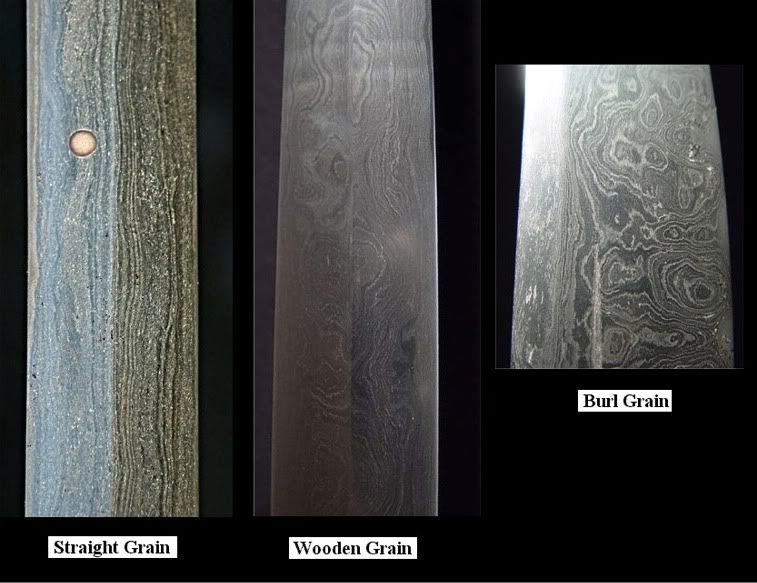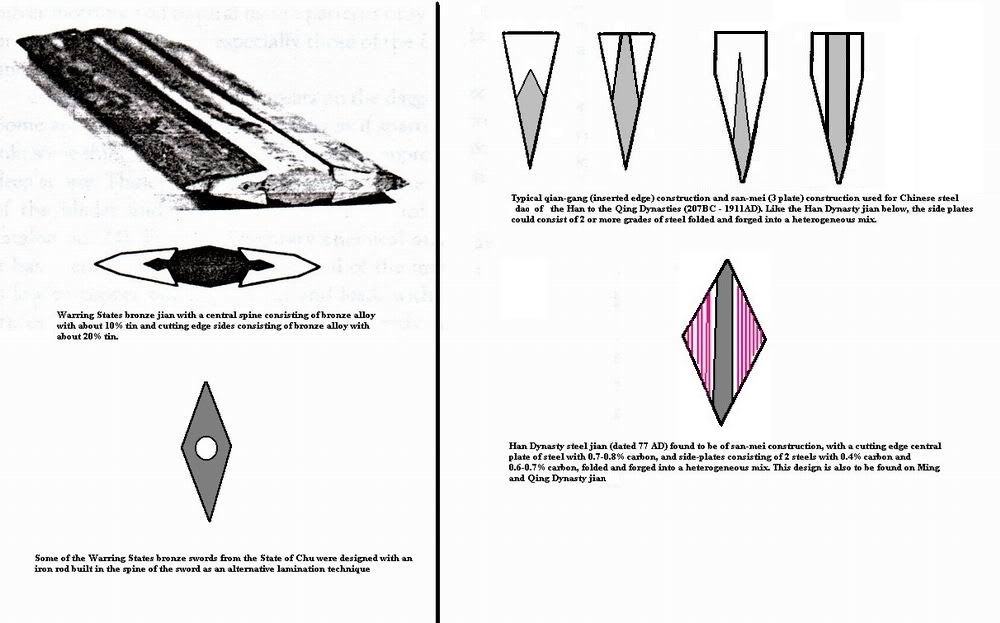the two different metals are stacked on top of each other and forged to get 100 or more levels. the swirly patterns can be brought out more by dipping the metal in acid. it eats away at some of the metal and not the other. ( assuming diferent carbon count metals were used) . this creates a microscopic serated edge on the blade. it makes the blade excelent for cutting flesh. it is refered to damascus or pattern welded steel. not sure wich is the correct term. the japanese blacksmiths would draw out the metal and bent it length-wise to forge instead of bending it in half width-wise. not sure how the chinese blacksmiths would do it. the blade edge is heat treated to cool quicker to give it a hard brittle edge to keep an edge. the spine of the blade is heat treated to cool longer so it is softer so the sword will bend a little instead of breaking. the different color edge on the blade if from the different layers of clay used in the heat treating. many blacksmiths would havr a "pattern" to mark their own swords.
A BJJ player and notorious pimp, Da Big Deezy, in the Crenshaw district tried to "raise up" and "slap a ho" ..... I impaled him with my retractible naginata. I wish there were more groundfighters in the world. They make my arsenal that much more deadly. - john takeshi
LIKE FROG IN WELL LOOKING UP AT SKY,THINKING SEE ALL WORLD. - truthman











 Reply With Quote
Reply With Quote


 +
+  =
=  & a
& a 






